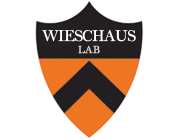Specificity of embryonic lethal mutations in Drosophila analyzed in germ line clones.
Publication Year
1986
Type
Journal Article
Abstract
Only a small fraction of the known mutations causing death to homozygous Drosophila produce gross morphological defects during embryogenesis. We have examined fourteen such loci on the X-chromosome to determine: 1) whether the requirement for their respective activities is restricted to embryogenesis; and 2) whether the embryonic phenotype in mutant embryos is affected by the dosage of wild-type alleles in the mother. For two alleles per locus germ line clones were produced during larval development by irradiating females heterozygous for the lethal mutation and a dominant female sterile (ovo(D)). Only one of the 14 loci (armadillo) is required during development of the germ cell to make morphologically normal eggs. Mutations at two other loci, (bazooka and Notch), allow normal oogenesis but cause major reductions in the viability of genetically normal (i.e., heterozygous) progeny. The majority of the loci (11/14) are not required in the germ line for either oogenesis or embryogenesis. However, in three cases (extradenticle, faintoid and lethal myospheroid), germ line homozygosity results in a readily detectible enhancement of embryonic phenotype over that observed in embryos derived from heterozygous mothers still possessing one wild type allele. The same six loci which show the most substantial effects on germ line homozygosity (arm, baz, N, exd, ftd and mys) also show an amelioration of the mutant phenotypes when maternal dosage is increased to wild type levels by using attached-X females. Four of these same loci (arm, baz, N and exd were cell lethal in imaginal discs.
Journal
Roux Arch Dev Biol
Volume
195
Issue
1
Pages
63-73
Date Published
01/1986
ISSN Number
0930-035X
Alternate Journal
Rouxs Arch. Dev. Biol.
PMID
28305278

